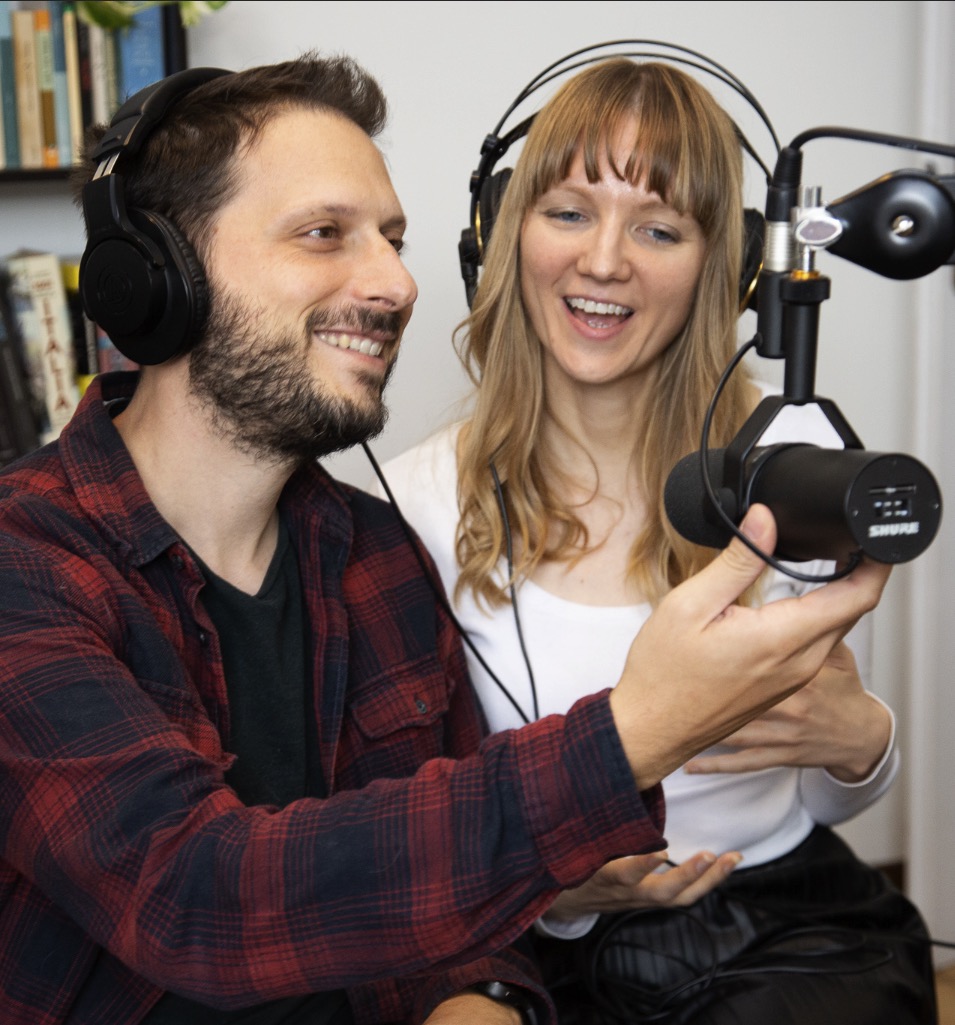It.
A pretty easy word in English, right? In Italian, it's a bit more complex, because it can change depending on:
- Whether it's masculine or feminine
- Where it appears the phrase.
But it's easy when you know how! Learn how to say "it" in episode 52 of 5 minute Italian.
To help you remember what you learnt in today's lesson, below you'll find bonus materials including word lists, quizzes and flashcards. But first...
Become a 5-minute Italian member (it's free!)
Learn to speak and understand Italian faster by joining the 5 minute Italian club! When you sign up, you'll get:
- Mini Italian lessons + bonus materials delivered to your inbox.
- Access to the private Facebook group where you can practice chatting in Italian.
- Invites to free speaking workshops.
If you'd like to join us, click here to become a member of 5 Minute Italian.
Bonus Materials
Remember what you learnt with the bonus materials for today's episode.
Today's Italian words
Spesso noto differenze tra la cultura italiana e la cultura inglese = I often notice differences between Italian and English culture.
Spesso = often
Noto = I notice
Differenze = differences
Tra = between
La cultura italiana = Italian culture
e = and
La cultura inglese = English culture
Tipo? = such as?
Per esempio, il caffè. In Italia, lo bevete più velocemente = For example, coffee. In Italy, you drink it more quickly.
Per esempio = for example
il caffè = (the) coffee.
in Italia = in Italy
lo = it
bevete = you drink (plural you - as in "you all drink")
più = more
velocemente = quickly.
lo bevete = you drink it
Anch'io noto delle differenze. Per esempio la birra = I also notice some differences. For example, the beer.
Anch'io = Also I
noto = notice
delle = some
differenze = differences.
Per esempio = for example
la birra = (the) beer.
La beviamo più velocemente, e più spesso! = We drink it faster, and more often!
La = it
Beviamo = we drink
Più = more
Velocemente = quickly
e = and
Più = more
Spesso = often
La mangiamo = we eat it (la pizza)
Lo mangiamo = we eat it (il pesce)
La maglietta = t-shirt
Voglio = I want
La voglio = I want it (la maglietta)
La compro = I'll buy it (la maglietta)
La voglio, la compro = I want it, I'll buy it (la maglietta)
Il portafoglio = wallet
Lo voglio, lo compro = I want it, I'll buy it (the wallet)
Take the Quiz!
How much did you learn? Find out in the 5-minute Italian quiz!
Click here to take the quiz for this episode: Direct Object Pronouns in Italian
Italian flashcards
Remember the vocabulary from your 5 Minute Italian lessons by downloading the digital flashcard pack.
- Download the flashcards: [5MI_52] Direct Object Pronouns in Italian
- Not sure how it works? Click here to watch the tutorial.
Transcript
Please note, this is not a word for word transcript.
Katie: Ciao a tutti e benvenuti a 5 Minute Italian, I’m Katie.
Matteo: And I’m Matteo.
K: This lesson is coming to you from the past, we recorded it in advance because right now we're in a little Italian town called Stresa on the Italian lakes, leading our very first Italian immersion holiday. Our classroom is a sunny balcony with lake views, so we'll be sitting on there, maybe with a glass of wine and some cheese, helping our students speak Italian. We're posting updates in our Facebook group, so if you'd like to see what it's all about, or find out how you can join us for the next one, you can join the 5 Minute Italian Facebook group by following the link in the show notes. But for now, let's continue learning Italian.
M: Today, we're learning about object pronouns. First, ascoltiamo la conversazione (let's listen to the conversation).
K: Spesso noto differenze tra la cultura italiana e la cultura inglese.
M: Tipo?
K: Per esempio, il caffè. In Italia, lo bevete più velocemente.
M: Anch'io noto delle differenze. Per esempio la birra.
K: La beviamo più velocemente, e più spesso!
So the first thing you heard me say was:
M: Spesso noto differenze tra la cultura italiana e la cultura inglese.
K: I often notice differences between Italian and English culture.
M:
Spesso = often
Noto = I notice
Differenze = differences
Tra = between
La cultura italiana = Italian culture
e = and
La cultura inglese = English culture
K: Then Matteo said:
M: Tipo?
K: Tipo literally means "type". But it's also used in Italian as an informal way to say "for example" or "such as". Next, you heard me say:
M: Per esempio, il caffè. In Italia, lo bevete più velocemente.
K: For example, coffee. In Italy, you drink it more quickly.
M:
Per esempio = for example
il caffè = (the) coffee.
in Italia = in Italy
lo = it
bevete = you drink (plural you - as in "you all drink")
più = more
velocemente = quickly.
K: And this "lo bevete" (you drink it) brings us to the main point of today's episode. The "lo" means "it", but in contrast to English, it comes before the verb. In Italian, we literally say: "it, you drink".
M: Yes, you have to talk backwards like yoda.
K: And this "lo" is an example of an object pronoun. Last week we looked at subject pronouns in Italian and this week we're looking at object pronouns. What's the difference?
Last week, we learnt that in English, subject pronouns are words "I", "you", "we" and they tell you who is doing something. In English and in Italian, they come before the verb. For example, "I eat" io mangio; "you eat"; tu mangi and so on.
Well, object pronouns are words which refer to a person or thing who is receiving the action. For example, if I say "I drink it", I'm the one who's doing the action, and "it" (the beer) is the thing that's receiving the action.
M: In English, object pronouns come after the verb, but in Italian, they come before it. That's why we say "lo bevete" (you drink it).
K: Let's listen to the rest of the conversation and see if we can spot another one. Matteo said:
M: Anch'io noto delle differenze. Per esempio la birra.
K: I also notice some differences, for example the beer.
Anch'io = Also I
noto = notice
delle = some
differenze = differences.
Per esempio = for example
la birra = (the) beer.
K: No object pronoun here. But what about the beer? Can you remember what I said about English people and beer?
M: La beviamo più velocemente, e più spesso!
K: We drink it faster, and more often!
La = it
beviamo = we drink
più = more
velocemente = quickly
e = and
più = more
spesso = often
K: Here we've got "la beviamo" which means "we drink it", literally, "it, we drink". And here you may notice that while before, when we were talking about coffee, we said "lo", whilst when talking about beer, we said "la". This is because in Italian, it has to agree with the noun. For masculine nouns, like coffee, we say "lo". For feminine nouns, like beer, we say "la". We know that pizza is feminine (la pizza). How would you say we eat it?
M: La mangiamo.
K: And il pesce (the fish) is masculine. So how would you say we eat it?
M: Lo mangiamo.
K: Now imagine you see a really nice "maglietta" (t-shirt), which is feminine "la maglietta". To say I want, we say "voglio". How would you say: "I want it"?
M: La voglio.
K: No immagine you want to buy it - say "I'll buy it". In Italian, you can use the present tense - I buy it!
M: La compro!
K: I want it, I'll buy it.
M: La voglio, la compro!
K: Now imagine you see a nice "portafoglio", which is masculine. "il portafoglio". How would you say "I want it, I'll buy it?"
M: Lo voglio, lo compro!
K: That's it from us today, to help you remember what you learnt in this lesson, you'll find bonus materials including a quiz and vocabulary flashcards on our website - head over to www.joyoflanguages.com/italianpodcast and scroll down to this episode. Or follow the link in the show notes to go straight there. You can also practice your Italian with us by joining our Facebook group, you'll find the link in the show notes below. Ciao for now, or as we say in Italian:
M: Alla prossima!
Get more 5-minute Italian
To get more 5 minute Italian, including lessons delivered to your inbox, access to the private Facebook group and invites to speaking workshops, click here to become a 5 Minute Italian member.

